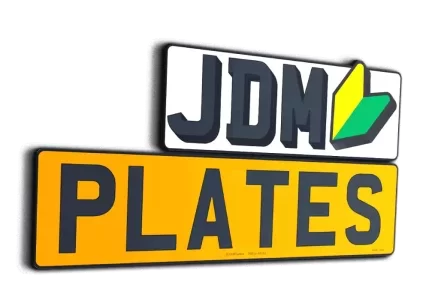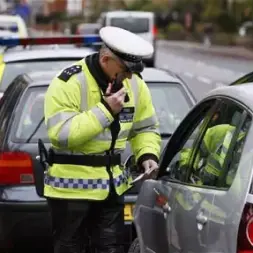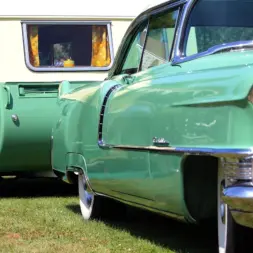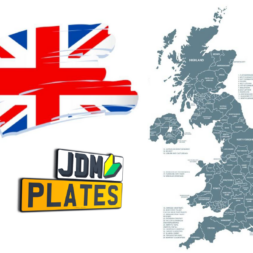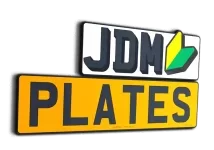Introduction
When you pass by a vehicle on the British motorways or local roads, have you ever wondered what the alphanumeric characters displayed on the number plate represent? While the current number plate system might seem straightforward, it has a rich and complex history that has evolved over more than a century. This article delves deep into the history of UK Number Plate Area Codes, unraveling its layers and offering a historical perspective on how this seemingly mundane aspect of British life tells a larger story.
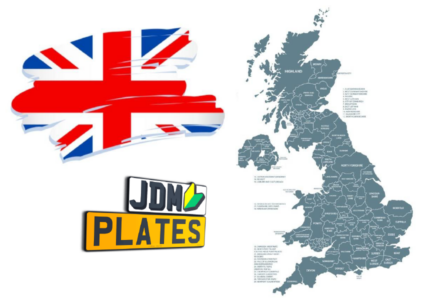
Origins of Number Plates in the UK
The Genesis: Motor Car Act 1903
The origin of the number plate system can be traced back to the Motor Car Act of 1903 whereby Regulation 2, paragraph 2, of this act, states that;
‘A mark, indicating the registered number of the car and the council with which the car is registered, shall be fixed on the car or on a vehicle drawn by the car, or on both, in such manner as the council requires in conformity with regulations of the Local Government Board made under this Act.’ .
Before this Act, there was little regulation governing the rapidly growing number of motor vehicles on British roads. The Act sought to bring order, making it compulsory for all motor vehicles to be registered and to display registration marks—early versions of today’s number plates. Initially, the plates were quite simple, often featuring just a one or two-letter area code followed by a sequence number.
The Rationale
The primary function of the early number plates was identification rather than regional categorization. But as the number of cars began to increase, the necessity for a more organized system became apparent. That led to the initial idea of incorporating area codes in the plates to signify where a vehicle was registered.
The Early Area Code System
Geography Meets Identification
In the early 20th century, the number plate area codes often consisted of one or two letters that identified a specific geographic location. For example, “A” was reserved for London, “B” for Lancashire, and so forth.
The Importance of Sequence
In this period, the sequence number that followed the area code was just as significant. Authorities initially assigned these numbers in the order in which vehicles were registered, giving the public a loose gauge of a vehicle’s age. Here is the full list of the early number plate area code format:-
|
Regional Prefix / Suffix Letter |
Location |
| A | |
| A | London |
| AA | Bournemouth |
| AB | Worcester |
| AC | Coventry |
| AD | Gloucester |
| AE | Bristol |
| AF | Truro |
| AG | Hull |
| AH | Norwich |
| AJ | Middlesbrough |
| AK | Sheffield |
| AL | Nottingham |
| AM | Swindon |
| AN | Reading |
| AO | Carlisle |
| AP | Brighton |
| AR | Chelmsford |
| AS | Inverness |
| AT | Hull |
| AU | Nottingham |
| AV | Peterborough |
| AW | Shrewsbury |
| AX | Cardiff |
| AY | Leicester |
| AZ | Belfast |
| B | |
| B | Lancashire |
| BA | Manchester |
| BB | Newcastle-upon-Tyne |
| BC | Leicester |
| BD | Northampton |
| BE | Lincoln |
| BF | Stoke-on-Trent |
| BG | Liverpool |
| BH | Luton |
| BJ | Ipswich |
| BK | Portsmouth |
| BL | Reading |
| BM | Luton |
| BN | Manchester or Bolton |
| BO | Cardiff |
| BP | Portsmouth |
| BR | Newcastle-upon-Tyne |
| BS | Aberdeen |
| BT | Leeds |
| BU | Manchester |
| BV | Preston |
| BW | Oxford |
| BX | Haverfordwest |
| BY | London (North-West) |
| BZ | County Down |
| C | |
| C | West Yorkshire |
| CA | Chester |
| CB | Manchester |
| CC | Bangor |
| CD | Brighton |
| CE | Peterborough |
| CF | Reading |
| CG | Bournemouth |
| CH | Nottingham |
| CJ | Gloucester |
| CK | Preston |
| CL | Norwich |
| CM | Liverpool |
| CN | Newcastle-upon-Tyne |
| CO | Exeter |
| CP | Huddersfield |
| CR | Southampton |
| CS | Glasgow |
| CT | Lincoln |
| CU | Newcastle-upon-Tyne |
| CV | Truro |
| CW | Preston |
| CX | Huddersfield |
| CY | Swansea |
| CZ | Belfast |
| D | |
| D | Kent |
| DA | Birmingham |
| DB | Manchester |
| DC | Middlesbrough |
| DD | Gloucester |
| DE | Haverfordwest |
| DF | Gloucester |
| DG | Gloucester |
| DH | Dudley |
| DJ | Liverpool |
| DK | Rochdale, later Manchester |
| DL | Portsmouth |
| DM | Chester |
| DN | Leeds |
| DO | Lincoln |
| DP | Reading |
| DR | Exeter |
| DS | Glasgow |
| DT | Sheffield |
| DU | Coventry |
| DV | Exeter |
| DW | Cardiff |
| DX | Ipswich |
| DY | Brighton |
| DZ | County Antrim |
| E | |
| E | Staffordshire |
| EA | Dudley |
| EB | Peterborough |
| EC | Preston |
| ED | Liverpool |
| EE | Lincoln |
| EF | Middlesbrough |
| EG | Peterborough |
| EH | Stoke-on-Trent |
| EJ | Haverfordwest |
| EK | Liverpool |
| EL | Bournemouth |
| EM | Liverpool |
| EN | Bury, later Manchester |
| EO | Preston |
| EP | Swansea |
| ER | Peterborough |
| ES | Dundee |
| ET | Sheffield |
| EU | Bristol |
| EV | Chelmsford |
| EW | Peterborough |
| EX | Norwich |
| EY | Bangor |
| EZ | Belfast |
| F | |
| F | Essex |
| FA | Stoke-on-Trent |
| FB | Bristol |
| FC | Oxford |
| FD | Dudley |
| FE | Lincoln |
| FF | Bangor |
| FG | Brighton |
| FH | Gloucester |
| FJ | Exeter |
| FK | Dudley |
| FL | Peterborough |
| FM | Chester |
| FN | Maidstone |
| FO | Gloucester |
| FP | Leicester |
| FR | Preston |
| FS | Edinburgh |
| FT | Newcastle-upon-Tyne |
| FU | Lincoln |
| FV | Preston |
| FW | Lincoln |
| FX | Bournemouth |
| FY | Liverpool |
| FZ | Belfast |
| G | |
| G | Glasgow |
| GA | Glasgow |
| GB | Glasgow |
| GC | London (South-West) |
| GD | Glasgow |
| GE | Glasgow |
| GF | London (South-West) |
| GG | Glasgow |
| GH | London (South-West) |
| GJ | London (South-West) |
| GK | London (South-West) |
| GL | Truro |
| GM | Reading |
| GN | London (South-West) |
| GO | London (South-West) |
| GP | London (South-West) |
| GR | Newcastle-upon-Tyne |
| GS | Luton |
| GT | London (South-West) |
| GU | London (South-East) |
| GV | Ipswich |
| GW | London (South-East) |
| GX | London (South-East) |
| GY | London (South-East) |
| GZ | Belfast |
| H | |
| H | London |
| HA | Dudley |
| HB | Cardiff |
| HC | Brighton |
| HD | Huddersfield |
| HE | Sheffield |
| HF | Liverpool |
| HG | Preston |
| HH | Carlisle |
| HJ | Chelmsford |
| HK | Chelmsford |
| HL | Sheffield |
| HM | London (Central) |
| HN | Middlesbrough |
| HO | Bournemouth |
| HP | Coventry |
| HR | Swindon |
| HS | Glasgow |
| HT | Bristol |
| HU | Bristol |
| HV | London (Central) |
| HW | Bristol |
| HX | London (Central) |
| HY | Bristol |
| J | |
| J | Durham |
| JA | Manchester |
| JB | Reading |
| JC | Bangor |
| JD | London (Central) |
| JE | Peterborough |
| JF | Leicester |
| JG | Maidstone |
| JH | Reading |
| JJ | Maidstone |
| JK | Brighton |
| JL | Lincoln |
| JM | Reading |
| JN | Chelmsford |
| JO | Oxford |
| JP | Liverpool |
| JR | Newcastle-upon-Tyne |
| JS | Inverness |
| JT | Bournemouth |
| JU | Leicester |
| JV | Lincoln |
| JW | Birmingham |
| JX | Huddersfield |
| JY | Exeter |
| JZ | County Down |
| K | |
| K | Liverpool |
| KA | Liverpool |
| KB | Liverpool |
| KC | Liverpool |
| KD | Liverpool |
| KE | Maidstone |
| KF | Liverpool |
| KG | Cardiff |
| KH | Hull |
| KJ | Maidstone |
| KK | Maidstone |
| KL | Maidstone |
| KM | Maidstone |
| KN | Maidstone |
| KO | Maidstone |
| KP | Maidstone |
| KR | Maidstone |
| KS | Edinburgh |
| KT | Maidstone |
| KU | Sheffield |
| KV | Coventry |
| KW | Sheffield |
| KX | Luton |
| KY | Sheffield |
| KZ | County Antrim |
| L | |
| L | Glamorganshire |
| LA | London (North-West) (used for London County Council before 1965) |
| LB | London (North-West) (used for London County Council before 1965) |
| LC | London (North-West) (used for London County Council before 1965) |
| LD | London (North-West) (used for London County Council before 1965) |
| LE | London (North-West) (used for London County Council before 1965) |
| LF | London (North-West) (used for London County Council before 1965) |
| LG | Chester |
| LH | London (North-West) (used for London County Council before 1965) |
| KJ | Bournemouth |
| LK | London (North-West) (used for London County Council before 1965) |
| LL | London (North-West) (used for London County Council before 1965) |
| LM | London (North-West) (used for London County Council before 1965) |
| LN | London (North-West) (used for London County Council before 1965) |
| LO | London (North-West) (used for London County Council before 1965) |
| LP | London (North-West) (used for London County Council before 1965) |
| LR | London (North-West) (used for London County Council before 1965) |
| LS | Edinburgh |
| LT | London (North-West) (used for London County Council before 1965) |
| LU | London (North-West) (used for London County Council before 1965) |
| LV | Liverpool |
| LW | London (North-West) (used for London County Council before 1965) |
| LX | London (North-West) (used for London County Council before 1965) |
| LY | London (North-West) (used for London County Council before 1965) |
| LZ | County Armagh |
| M | |
| M | Cheshire |
| MA | Chester |
| MB | Chester |
| MC | London (North-East) (used for Middlesex before 1965) |
| MD | London (North-East) (used for Middlesex before 1965) |
| ME | London (North-East) (used for Middlesex before 1965) |
| MF | London (North-East) (used for Middlesex before 1965) |
| MG | London (North-East) (used for Middlesex before 1965) |
| MH | London (North-East) (used for Middlesex before 1965) |
| MJ | Luton |
| MK | London (North-East) (used for Middlesex before 1965) |
| ML | London (North-East) (used for Middlesex before 1965) |
| MM | London (North-East) (used for Middlesex before 1965) |
| MN | used in the Isle of Man |
| MO | Reading |
| MP | London (North-East) (used for Middlesex before 1965) |
| MR | Swindon |
| MS | Edinburgh |
| MT | London (North-East) (used for Middlesex before 1965) |
| MU | London (North-East) (used for Middlesex before 1965) |
| MV | London (North-East) (used for Middlesex before 1965) |
| MW | Swindon |
| MX | London (North-East) (used for Middlesex before 1965) |
| MY | London (North-East) (used for Middlesex before 1965) |
| MZ | Belfast |
| N | Manchester |
| NA | Manchester |
| NB | Manchester |
| NC | Manchester |
| ND | Manchester |
| NE | Manchester |
| NF | Manchester |
| NG | Norwich |
| NH | Northampton |
| NJ | Brighton |
| NK | Luton |
| NL | Newcastle-upon-Tyne |
| NM | Luton |
| NN | Nottingham |
| NO | Chelmsford |
| NP | Worcester |
| NR | Leicester |
| NS | Glasgow |
| NT | Shrewsbury |
| NU | Nottingham |
| NV | Northampton |
| NW | Leeds |
| NX | Dudley |
| NY | Cardiff |
| NZ | County Londonderry/Derry |
| O | |
| O | Birmingham |
| OA | Birmingham |
| OB | Birmingham |
| OC | Birmingham |
| OD | Exeter |
| OE | Birmingham |
| OF | Birmingham |
| OG | Birmingham |
| OH | Birmingham |
| OI | Belfast |
| OJ | Birmingham |
| OK | Birmingham |
| OL | Birmingham |
| OM | Birmingham |
| ON | Birmingham |
| OO | Chelmsford |
| OP | Birmingham |
| OR | Portsmouth |
| OS | Glasgow |
| OT | Portsmouth |
| OU | Bristol |
| OV | Birmingham |
| OW | Southampton |
| OX | Birmingham |
| OY | London (North-West) |
| OZ | Belfast |
| P | |
| P | Surrey |
| PA | Guildford |
| PB | Guildford |
| PC | Guildford |
| PD | Guildford |
| PE | Guildford |
| PF | Guildford |
| PG | Guildford |
| PH | Guildford |
| PJ | Guildford |
| PK | Guildford |
| PL | Guildford |
| PM | Guildford |
| PN | Brighton |
| PO | Portsmouth (GPO formerly used for General Post Office vehicles) |
| PP | Luton |
| PR | Bournemouth |
| PS | Aberdeen |
| PT | Newcastle-upon-Tyne |
| PU | Chelmsford |
| PV | Ipswich |
| PW | Norwich |
| PX | Portsmouth |
| PY | Middlesbrough |
| PZ | Belfast |
| R | |
| R | Derbyshire |
| RA | Nottingham |
| RB | Nottingham |
| RC | Nottingham |
| RD | Reading |
| RE | Stoke-on-Trent |
| RF | Stoke-on-Trent |
| RG | Newcastle-upon-Tyne |
| RH | Hull |
| RJ | Manchester |
| RK | London (North-West) |
| RL | Truro |
| RM | Carlisle |
| RN | Preston |
| RO | Luton |
| RP | Northampton |
| RR | Nottingham |
| RS | Aberdeen |
| RT | Ipswich |
| RU | Bournemouth |
| RV | Portsmouth |
| RW | Coventry |
| RX | Reading |
| RY | Leicester |
| RZ | County Antrim |
| S | |
| S | Edinburgh |
| SA | Aberdeen |
| SB | Glasgow |
| SC | Edinburgh |
| SD | Glasgow |
| SE | Aberdeen |
| SF | Edinburgh |
| SG | Edinburgh |
| SH | Edinburgh |
| SJ | Glasgow |
| SK | Inverness |
| SL | Dundee |
| SM | Carlisle |
| SN | Dundee |
| SO | Aberdeen |
| SP | Dundee |
| SR | Dundee |
| SS | Aberdeen |
| ST | Inverness |
| SU | Glasgow |
| SW | Carlisle |
| SX | Edinburgh |
| T | |
| T | Devon |
| TA | Exeter |
| TB | Liverpool |
| TC | Bristol |
| TD | Manchester |
| TE | Manchester |
| TF | Reading |
| TG | Cardiff |
| TH | Swansea |
| TJ | Liverpool |
| TK | Exeter |
| TL | Lincoln |
| TM | Luton |
| TN | Newcastle-upon-Tyne |
| TO | Nottingham |
| TP | Portsmouth |
| TR | Southampton |
| TS | Dundee |
| TT | Exeter |
| TU | Chester |
| TV | Nottingham |
| TW | Chelmsford |
| TX | Cardiff |
| TY | Newcastle-upon-Tyne |
| TZ | Belfast |
| U | |
| U | Leeds |
| UA | Leeds |
| UB | Leeds |
| UC | London (Central) |
| UD | Oxford |
| UE | Dudley |
| UF | Brighton |
| UG | Leeds |
| UH | Cardiff |
| UI | County Londonderry/Derry |
| UJ | Shrewsbury |
| UK | Birmingham |
| UL | London (Central) |
| UM | Leeds |
| UN | Exeter |
| UO | Exeter |
| UP | Newcastle-upon-Tyne |
| UR | Luton |
| US | Glasgow |
| UT | Leicester |
| UU | London (Central) |
| UV | London (Central) |
| UW | London (Central) |
| UX | Shrewsbury |
| UY | Worcester |
| UZ | Belfast |
| V | |
| V | Lanarkshire |
| VA | Peterborough |
| VB | Maidstone |
| VC | Coventry |
| VD | Lanarkshire/Luton |
| VE | Peterborough |
| VF | Norwich |
| VG | Norwich |
| VH | Huddersfield |
| VJ | Gloucester |
| VK | Newcastle-upon-Tyne |
| VL | Lincoln |
| VM | Manchester |
| VN | Middlesbrough |
| VO | Nottingham |
| VP | Birmingham |
| VR | Manchester |
| VS | Luton |
| VT | Stoke-on-Trent |
| VU | Manchester |
| VV | Northampton |
| VW | Chelmsford |
| VX | Chelmsford |
| VY | Leeds |
| VZ | County Tyrone |
| W | |
| W | Sheffield |
| WA | Sheffield |
| WB | Sheffield |
| WC | Chelmsford |
| WD | Dudley |
| WE | Sheffield |
| WF | Sheffield |
| WG | Sheffield |
| WH | Manchester or Bolton |
| WJ | Sheffield |
| WK | Coventry |
| WL | Oxford |
| WM | Liverpool |
| WN | Swansea |
| WO | Cardiff |
| WP | Worcester |
| WR | Leeds |
| WS | Bristol |
| WT | Leeds |
| WU | Leeds |
| WV | Brighton |
| WW | Leeds |
| WX | Leeds |
| WY | Leeds |
| WZ | Belfast |
| X | |
| X | Northumberland |
| XI | Belfast |
| XZ | County Armagh |
| Y | |
| Y | Somerset |
| YA | Taunton |
| YB | Taunton |
| YC | Taunton |
| YD | Taunton |
| YE | London (Central) |
| YF | London (Central) |
| YG | Leeds |
| YH | London (Central) |
| YJ | Brighton |
| YK | London (Central) |
| YL | London (Central) |
| YM | London (Central) |
| YN | London (Central) |
| YO | London (Central) |
| YP | London (Central) |
| YR | London (Central) |
| YS | Glasgow |
| YT | London (Central) |
| YU | London (Central) |
| YV | London (Central) |
| YW | London (Central) |
| YX | London (Central) |
| YY | London (Central) |
| YZ | County Londonderry |
Post-War Changes
The Boom of the Automobile Industry
The post-WWII era was a period of economic recovery and a boom in the automobile industry. Vehicle ownership became more common, and the simple number plate area code and sequence number system began to show its limitations which therefore required an overhaul!
The Urban Shift
As people moved from rural to urban areas in the post-war years, some area codes began to “run out” of numbers. This necessitated the creation of new area codes, and occasionally, the reshuffling of existing ones.
1960s Reforms and The Modernization Effort
A Major Overhaul
By the 1960s, it was clear that a more robust system was required to cope with the burgeoning number of motor vehicles. The government introduced a new format that included a year identifier, helping people quickly gauge the age of a vehicle. This first overhaul of the number plate format used the first letter, and last letter to identify the year of the vehicle manufacture; this led to the prefix number plate style and suffix number plate styles.
Suffix number plates started in the year 1963 up until 1982 when the more recent prefix number plate format took over; the list of the suffix number plate age related plates are below:-
| SUFFIX | YEAR OF RELEASE |
| A | 1963 |
| B | 1964 |
| C | 1965 |
| D | 1966 |
| E | 1967 |
| F | 1967 |
| G | 1968 |
| H | 1969 |
| J | 1970 |
| K | 1971 |
| L | 1972 |
| M | 1973 |
| N | 1974 |
| P | 1975 |
| R | 1976 |
| S | 1977 |
| T | 1978 |
| V | 1979 |
| W | 1980 |
| X | 1981 |
| Y | 1982 |
Public Reaction
The new system was initially met with some resistance, as people had grown accustomed to the old format. However, the benefits—such as the ability to identify the age of a vehicle quickly—soon became apparent, and the new system was widely adopted.
The Current System: Prefix and Current Style
Evolution to the Present Day
The system has seen several changes since the 1960s, culminating in the two formats we’re familiar with today: the prefix and current styles. While the prefix style, used until 2001, featured a year identifier at the beginning of the number, the current style has the year identifier in the middle.
The prefix number plate age related plates are as seen below. This number plate format started in 1983 and ended in 2001 when the newer ‘current number plate style’ took over.
| PREFIX | YEAR OF RELEASE |
| A | 1983 |
| B | 1984 |
| C | 1985 |
| D | 1986 |
| E | 1987 |
| F | 1988 |
| G | 1989 |
| H | 1990 |
| J | 1991 |
| K | 1992 |
| L | 1993 |
| M | 1994 |
| N | 1995 |
| P | 1996 |
| R | 1997 |
| S | 1998 |
| T | 1999 |
| V | 1999 |
| W | 2000 |
| X | 2000 |
| Y | 2001 |
| Y | 2001 |
Number Plate Area Codes Today
Today’s area codes are still two letters, but they now point to the specific DVLA office where the vehicle was registered, rather than a broader geographic region. For instance, plates starting with “EA” to “EY” are registered in Essex. However, the full table can be seen below:-
| Regional Identifiers | Region | DVLA Office |
| AA, AB, AC, AD, AE, AF, AG, AH, AJ, AK, AL, AM, AN | Anglia | Peterborough |
| AO, AP, AR, AS, AT, AU | Anglia | Norwich |
| AV, AW, AX, AY | Anglia | Ipswich |
| BA, BB, BC, BD, BE, BF, BG, BH, BJ, BK, BL, BM, BN, BO, BP, BR, BS, BT, BU, BV, BW, BX, BY | Birmingham | Birmingham |
| CA, CB, CC, CD, CE, CF, CG, CH, CJ, CK, CL, CM, CN, CO | Cymru | Cardiff |
| CP, CR, CS, CT, CU, CV | Cymru | Swansea |
| CW, CX, CY | Cymru | Bangor |
| DA, DB, DC, DD, DE, DF, DG, DH, DJ, DK | Deeside to Shrewsbury | Chester |
| DL, DM, DN, DO, DP, DR, DS, DT, DU, DV, DW, DX, DY | Deeside to Shrewsbury | Shrewsbury |
| EA, EB, EC, ED, EE, EF, EG, EH, EJ, EK, EL, EM, EN, EO, EP, ER, ES, ET, EU, EV, EW, EX, EY | Essex | Chelmsford |
| FA, FB, FC, FD, FE, FF, FG, FH, FJ, FK, FL, FM, FN, FP | Forest and Fens | Nottingham |
| FR, FS, FT, FV, FW, FX, FY | Forest and Fens | Lincoln |
| GA, GB, GC, GD, GE, GF, GG, GH, GJ, GK, GL, GM, GN, GO | Garden of England | Maidstone |
| GP, GR, GS, GT, GU, GV, GX, GY | Garden of England | Brighton |
| HA, HB, HC, HD, HE, HF, HG, HH, HJ | Hampshire and Dorset | Bournemouth |
| HK, HL, HM, HN, HO, HP, HR, HS, HT, HU, HV, HX, HY | Hampshire and Dorset | Portsmouth |
| HW | Hampshire and Dorset | Portsmouth (Used exclusively for the Isle of Wight) |
| KA, KB, KC, KD, KE, KF, KG, KH, KJ, KK, KL | – | Luton |
| KM, KN, KO, KP, KR, KS, KT, KU, KV, KW, KX, KY | – | Northampton |
| LA, LB, LC, LD, LE, LF, LG, LH, LJ | London | Wimbledon |
| LK, LL, LM, LN, LO, LP, LR, LS, LT | London | Stanmore |
| LU, LV, LW, LX, LY | London | Sidcup |
| MA, MB, MC, MD, ME, MF, MG, MH, MJ, MK, ML, MM, MN, MO, MP, MR, MS, MT, MU, MV, MW, MX, MY | Manchester and Merseyside | Manchester |
| NA, NB, NC, ND, NE, NF, NG, NH, NJ, NK, NL, NM, NN, NO | North | Newcastle |
| NP, NR, NS, NT, NU, NV, NW, NX, NY | North | Stockton |
| OA, OB, OC, OD, OE, OF, OG, OH, OJ, OK, OL, OM, ON, OO, OP, OR, OS, OT, OU, OV, OW, OX, OY | Oxford | Oxford |
| PA, PB, PC, PD, PE, PF, PG, PH, PJ, PK, PL, PM, PN, PO, PP, PR, PS, PT | Preston | Preston |
| PU, PV, PW, PX, PY | Preston | Carlisle |
| RA, RB, RC, RD, RE, RF, RG, RH, RJ, RK, RL, RM, RN, RO, RP, RR, RS, RT, RU, RV, RW, RX, RY | Reading | Reading |
| SA, SB, SC, SD, SE, SF, SG, SH, SJ | Scotland | Glasgow |
| SK, SL, SM, SN, SO | Scotland | Edinburgh |
| SP, SR, SS, ST | Scotland | Dundee |
| SU, SV, SW | Scotland | Aberdeen |
| SX, SY | Scotland | Inverness |
| VA, VB, VC, VD, VE, VF, VG, VH, VJ, VK, VL, VM, VN, VO, VP, VR, VS, VT, VU, VV, VW, VX, VY | Severn Valley | Worcester |
| WA, WB, WC, WD, WE, WF, WG, WH, WJ | West of England | Exeter |
| WK, WL | West of England | Truro |
| WM, WN, WO, WP, WR, WS, WT, WU, WV, WW, WX, WY | West of England | Bristol |
| YA, YB, YC, YD, YE, YF, YG, YH, YJ, YK | Yorkshire | Leeds |
| YL, YM, YN, YO, YP, YR, YS, YT, YU | Yorkshire | Sheffield |
| YV, YW, YX, YY | Yorkshire | Beverley |
Unique and Notable Area Codes
Vanity and Custom Plates
While most people have a standard, current style, number plate, there’s a thriving market for ‘vanity’ or custom plates that often have unique area codes or meanings. For instance, “1 A,” believed to be the first-ever number plate issued in the UK, was auctioned for a staggering £160,000 in 1989. However, if it was up for sale today, it would be valued in excess of £10,000,000!
VIP Codes
Over the years, some area codes have gained notoriety for being associated with luxury or VIP status. Anecdotal evidence suggests that plates from certain affluent areas or specific codes known only to insiders have become particularly sought-after.
Private Number Plates Statistics
According to the DVLA, after the 30th anniversary of the famous “1 A” number plate auction, the following 6 statistical records regarding personalised registrations are as follows:-
- DVLA sold 658 registrations in the 1989/90 financial year, increasing to 26,161 the following year. In the 2018/19 financial year almost 404,000 registrations were sold.
- The average price for registration marks sold at a timed auction currently stands at £877 and £3,225 for those sold at live auctions, while the average price for those sold direct through the DVLA website is £342.
- A recent DVLA survey showed that 69% of respondents would buy a private registration because of a personal connection, a name or initial, 6% for their business, while 17% said they saw them as an investment.
- Research by DVLA shows that 28% of UK motorists have named their car, with ‘Doris’, ‘Dave’, ‘Henry’, ‘Betsy’ and ‘Bumble’ all popular. Of those, 87% said they had bought a personalised registration to match the name they give to their car.
- With the vast majority of two-letter, one single number registrations already issued or sold, ‘IG 1’ is certain to draw the attention of those looking to purchase a rare find at the auction in the Vale Resort in Hensol, Vale of Glamorgan.
- Auctions have been held at venues including Legoland, Old Trafford, home of Manchester United, the Heritage Motor Museum, Granada Film Studios, the Imperial War Museum and Williams F1 Conference Centre and Museum.
The future of the Number Plate Format
As we slowly consume the availability of the current style number plate format, we may think and wonder when the current system will end. As of 2023, we are currently in the 23/73 format of number plates which is approximately halfway through the current styles timeline which started on the 01/51 identifier in 2001/2002.
As the current style started on the 01/51 identifier, then surely it must end on the “50” identifier in the year 2050 which will then lead us UK motorists onto a new age of number plate formats. We may see a shuffle in the format of characters or we may see a completely different layout entirely – who knows!
Conclusion
The number plate area codes system in the UK is more than just a series of letters and numbers. It’s a living history book that offers insights into the socio-economic shifts, technological advancements, and legislative reforms that have shaped the nation. As we look towards the future—with the advent of electric vehicles and potential new reforms—one can only wonder what the next chapter in this fascinating history will be.
With its humble beginnings in 1903 to its current structured and detailed form, the history of the UK number plate area codes serves as a remarkable reflection of Britain’s legislative, technological, and social journey. It may be a topic you’d never given much thought to, but behind those letters and numbers is a narrative that is deeply intertwined with the fabric of the United Kingdom itself.
